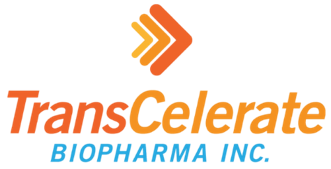TransCelerate Establishes Technology Common Protocol Template and Collaborates with the FDA/NIH
Rob DiCicco, VP of Clinical Innovation and Digital Platforms at GSK, will discuss the TransCelerate protocol template initiative in this interview.
TransCelerate has been developing a protocol template for a while, recently launching the Common Protocol Template that has been harmonized with proposed model language and a common structure with the FDA and NIH. Despite others creating their own forms of protocol templates, there is one major difference with TransCelerate’s approach: the use of technology to enhance efficiency, quality, and consistency in protocol development. Rob DiCicco, VP of Clinical Innovation and Digital Platforms at GSK, will discuss this Initiative in this interview.
Moe Alsumidaie: What is the goal of the TransCelerate Common Protocol Template Initiative?
Rob DiCicco

Rob DiCicco: Protocol development has historically been like reinventing the wheel every time you do it, both within the company and from company to company. The goal of the Common Protocol Template Initiative is to find an efficient process for protocol development-it’s aligned with TransCelerate’s mission on identifying and addressing inefficiencies in clinical trials. TransCelerate’s first five workstreams have identified industry data standards that contain key elements of driving efficiency and quality in clinical trials. In order to optimize the value of introducing data standards, a protocol front engine was needed so that standards could be introduced up front. To achieve traceability in an industry sponsored study, you needed the protocol piece that would anchor those data standards to form objectives through to endpoints and procedures and in order to recognize the benefits of harmonization and reduce the inefficiencies at a study level end-to-end. The Common Protocol Template will enable biopharmaceutical enterprises to start to gain efficiencies through connecting processes and via automation.
MA: How is TransCelerate’s protocol template different than the NIH and FDA template? Is there any overlap with the TransCelerate protocol template and other protocol templates?
RD: The TransCelerate Common Protocol Template Initiative represents the first time when a core group of 18 biopharma companies came together and agreed to develop an efficient and automated protocol template. A document-based version was published on our website in December of 2015. In the conversations that we’ve had with the FDA and NIH leadership council in early 2016, the organizations indicated that they were also working on building a protocol template, and they put theirs out for public comment in March of 2016. We thought that it would be a good opportunity to take a hard look at one another's efforts to see how close the templates were and if there was any value in bringing them closer together. We concluded that there was about 80% overlap in how the two templates were organized. We then collaborated through a series of meetings to further align those areas that appeared different. The Level 1 and Level 2 heading structures, the terminology within those headings, and the intended content within those sections are now aligned. We view this as a major achievement.
MA: What are the key components of the common protocol template?

RD: There are two major components to the TransCelerate Common Protocol Template. One is the core backbone that has the key elements of every protocol. The second involves therapy-area specific libraries. Those therapy area-specific libraries contain information specifically related to study endpoints and study objectives, such as inclusion/exclusion criteria that are disease area specific. Those disease area libraries contain terminologies which are connected to CDISC data standards and CDISC therapy area user guides. That offers two elements of value: the ability to import information from the library into the protocol in an automated way, and to reduce the potential for human error (i.e., copying and pasting from an old protocol). The second is that it creates some connectivity between the protocol level information and information that will end up in the data space. In a selected way, this starts to build some element of traceability in the protocol.
MA: Can you describe how the TransCelerate template allows for the reuse of protocol level information and other requirements?
RD: We built content controls into a number of different areas of the protocol for different purposes. When you enter a piece of information in the protocol that is going to appear more than once, it will appear the same way every single time. If you modify the protocol, you will change it in every place that the piece of information occurs. We did that to make sure that there weren’t human errors in the creation of the protocol. According to Tufts University, 66% of the Phase II and Phase III protocols get amended and about 10% are due to human errors. These errors create time delays and it adds up when applied across the industry; we hope to eliminate that 10% through the technology and automation.
The same content control that contains the information within the protocol can be exported in an XML format, so it can be consumed by any document-based application. A company or a sponsor that wants to run three studies that collect more or less the same information and same endpoints can now generate reports that will allow study teams to compare them across studies. You can start to export other required documents for a statistical analysis plan so that the protocol level information appears the same way in your protocol as it does in your statistical analysis plan. We've got pilots this year that will look at exporting protocol level information to registry disclosure websites like clinicaltrials.gov. Currently, the people who post those summaries on clinicaltrials.gov are not necessarily the same people who wrote the protocol. They have to interpret the information correctly from the protocol and translate and post it. Now, you have an opportunity for somebody who has not been part of the protocol offering to export the required information in an automated fashion and not worry about how they interpret and translate it. We continue to look for the pieces in the protocol that would offer value if you were to export them in an automated fashion.
MA: Will protocol templates also improve efficiency in key risk and performance indicator generation in quality risk management?
RD: We are at the beginning of the journey. The first part is to get enough harmonization to allow us to take advantage of things like automation. If you can digitalize the right parts of the protocol you can start utilizing analytics to drive some of your inclusion/exclusion criteria. You could start leveraging reuse to drive your monitoring plan and your risk management plan and see how certain parts of the protocols drive the study performance. We do that today, but it’s a highly manual process.
Moving Towards Decentralized Elements: Q&A with Scott Palmese, Worldwide Clinical Trials
December 6th 2024Palmese, executive director, site relationships and DCT solutions, discusses the practice of incorporating decentralized elements in a study rather than planning a decentralized trial from the start.